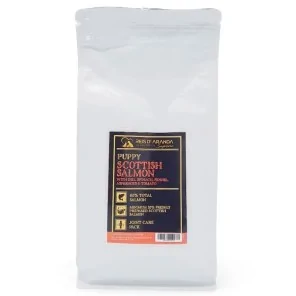The Tornjak originated from genetically homogeneous, almost extinct, indigenous shepherd dogs. These dogs have...
THE CHINESE CRESTED
THE ORIGIN OF THE CHINESE CRESTED
There is nothing really clear about the history of the Chinese Crested. The only thing that can be stated with certainty is that, like the other ‘naked’ breeds and some ‘primitive’ breeds, it comes from Canis africanus and not from Canis comunis, from which most of the known domestic dog breeds originate.
The name has a logical and obvious reason as far as ‘crested’ is concerned; they have a crest on their head. In contrast, the Chinese origin is somewhat coincidental.
The known naked breeds all seem to originate from Latin America. The best known and recognised by the FCI are the Mexican Xoloitzcuintle and the Peruvian Hairless Dog, both with the genetic varieties of the Chinese Crested: they occur in both naked and hairless varieties.
In this regard, it is speculated that Chinese sailors may have taken some of these breeds or their ancestors back to their imperial territory on their ships as gifts to their chiefs. In time, the breed would differentiate itself from the other hairless breeds by its size and by the obvious presence of the crest, the tuft on the tail and the ‘socks’ on the legs, which make the Chinese Crested a distinct and established breed.
How long there were Chinese Cresteds in China is uncertain, not least because there are no Cresteds in China now. So why wasn't the breed lost? Because the British brought Cresteds into the British Empire and retained their characteristics until recent times.
That's right, it was the British, once upon a time, who brought the breed back and improved it to what it is today. The Americans have also done a lot for the evolution of the breed but always starting from British lines. In general we could say that in the USA more care has been taken with the character, let us not forget that the origins of the breed are primitive and perhaps less ‘domestic’ than usual.
WHAT IS THE CHINESE CRESTED LIKE?
The Chinese Crested is a small, light breed of dog, its body is slightly longer than tall and very lithe. The back is horizontal, but the croup is rounded. The chest is deep and the underline is moderately tucked up at the level of the belly. As for the coat of this dog, there are two distinct varieties: the Chinese Crested Hairless Dog and the Powder Puff. The former has a long crest, fur on the legs and the tip of the tail, while the powder puff has a veil-like coat all over its body.
The head of the Chinese Crested is wedge-shaped and the roof of the skull is slightly rounded. In the hairless variety, as mentioned above, it has a silky coat crest, in the powder puff it has the normal coat of that type. The nose is prominent and can be of any colour. The teeth, on the other hand, may appear misaligned and even missing in the hairless variety, although this is not a trait present in all specimens. The eyes are medium-sized and of the darkest possible colour, the ears are erect and low set, except in the powder puff, where drooping ears are permitted.
The tail of the Chinese Crested is long and set on high. It is almost straight and does not curve over the back or curl. The dog carries it up straight or to one side when active, while when the dog is at rest, the tail hangs naturally. In the powder puff variety the tail is completely covered with hair. In the hairless variety, the tail has feathered fur, but only in the distal two thirds. In both types, the tail tapers gradually, being thicker at the base and thinner at the tip.
The coat of the powder puff is double-coated and covers the whole body with a characteristic veil-like coat. The hairless variety, however, has only a crest on the head, hair on the feet and on the tip of the tail. The skin is delicately grained and soft.
Within the hairless we can find three variants according to the amount of body hair the dog has: True Hairless, Medium Hairless and Hairy Hairless.
In both types of Chinese Crested dogs any colour and combination of colours is acceptable, so it is not surprising to see white, black spotted, salt and pepper or earth tones Chinese Cresteds.
To finish with the physical characteristics of the Chinese Crested, the Fédération Cynologique Internationale (FCI) states that the breed standard should have a height at the withers ranging from 28 to 33 cm in males, and from 23 to 30 cm in females. As for weight, it is variable and there is no specific weight, although it is not recommended that they should not exceed five and a half kilos.
CARE OF THE CHINESE CRESTED
Care varies according to the type of Chinese Crested we have in front of us. In the case of hairless dogs, baths and care should be weekly, the first thing to do is to completely remove all the body hair using depilatory creams (trying first on a small part to check if our dog is allergic to it) or depilatory clippers (for example, Braun) for which we will have to stretch the skin well and remove with rubber bands all the hair that could accidentally get caught during the procedure.
Once we have removed all the body hair, we will shave against the grain with a surgical razor the face and throat (the ears can also be shaved, it is more aesthetic, especially if our Chinese Crested has soft cartilage and its ears tend to droop).
Then we will proceed to the bath, we will have to exfoliate the skin of our Chinese Crested and use a soft and moisturizing shampoo, then we will use a good quality mask for the hairless areas as well as for the hairy areas, we will wait 5 minutes and we will remove everything with warm water. Dry our dog without rubbing, spray him with a heat protection spray and dry him well with a hairdryer while brushing with a butter brush. All that remains is to round off the hands and feet.
This process should be done every week to avoid blackheads and blackheads, which can become more frequent as the dog ages.
On summer days and when the hairless dog is going to be exposed to the sun, we must apply a very high protection sun cream especially for sun allergies (protection 100), otherwise he may suffer from sunburn.
In winter, we will have to put our hairless Chinese Crested in jumpers, cotton suits or anoraks for dogs to protect them from the cold.
As for the powderpuff variety (with hair), we will only shave the ears, face and throat up to the sternum. Check that there are no knots in the coat and bathe it with a good moisturising shampoo to which we will add a nourishing mask, remove everything well with warm water and dry it by squeezing the coat with your hands and a towel to remove all the excess water (never rub). Spray it with a heat protection spray and use a little volumising mousse to give body to the coat, dry it carefully while brushing and, once it is dry, round off the hands and feet. This variety can be bathed every fortnight, but in the meantime it should be brushed every day using a moisturising spray for dry coat.
THE HEALTH OF THE CHINESE CRESTED
The Chinese Crested, not being a popular or well-known breed, has not seen its health spoiled by overbreeding; this type of dog is quite healthy but has some hereditary diseases which should be tested for before breeding.
-PLL [Primary lens luxation]: It is a well recognised, painful and blinding inherited eye condition affecting many breeds of dog, particularly terrier and terrier-type breeds. In affected dogs the fibres that support the lens break down or disintegrate. As a result, the lens falls into the wrong position within the eye.
-PRA [Progressive Retinal Atrophy]: There are two types of photoreceptor neurons in the retina: rods (located more in the periphery of the retina) and cones (located closer to the centre). These photoreceptors gradually deteriorate so that the retina is no longer able to capture light and, as it is unable to send information to the brain, the animal gradually stops seeing. On many occasions, it is difficult to detect and the owner does not realise until the disease is very advanced.
It is a hereditary disease that affects both eyes equally, some breeds are more predisposed than others but it can affect any breed and animal.
-CMSD [Canine multiple systemic degeneration]: The cerebellum is affected. Symptoms of CMSD are observed between 3 to 6 months of age, dogs fall infrequently when walking and their condition worsens at the age of 6 to 8 months, movement disorders become more frequent and falls are more abrupt and repetitive; at 12-18 months, the dog is no longer able to make a single voluntary movement.
-DENTAL PROBLEMS: The hairless gene is associated with a natural lack of teeth, their shape is different and they have small roots, so it is quite normal for these hairless dogs to have few teeth or to lose them easily. This does not prevent them from eating at all and does not cause them any more problems than any other small dog.
In the case of powderpuff (hairy) dogs this does not happen and they should have a full mouth. The lack of teeth is not penalised in shows as far as hairless Cresteds are concerned, nor are they an impediment to breeding.
WHAT IS THE CHINESE CRESTED LIKE AS A PET?
The Chinese Crested is one of the best breeds in the dog world when it comes to companionship with humans. They are excellent for family life, they adapt easily to homes with children (who know how to respect them) and are undoubtedly wonderful for the elderly. Their fun personality and ease of learning makes them ideal for all types of environments, they love to sleep in bed with their owners and are not at all delicate animals.
An excellent choice for dog novices and experienced people who want a unique, fun and intelligent companion.
CONCLUSION
The Chinese Crested is a unique and wonderful breed that connects perfectly with the human being, its sensitive and almost spiritual personality (but not weak at all) and great intelligence make it one of the best options for all kind of families, who will be happy with its jumps and great range of vocal sounds, very expressive.
Leave a comment
Log in to post comments
















